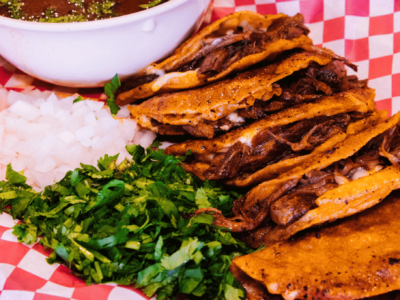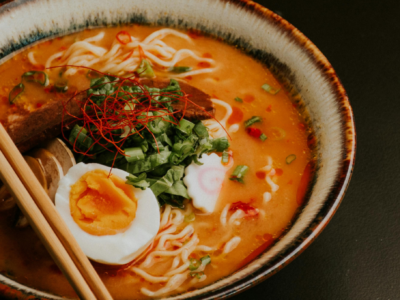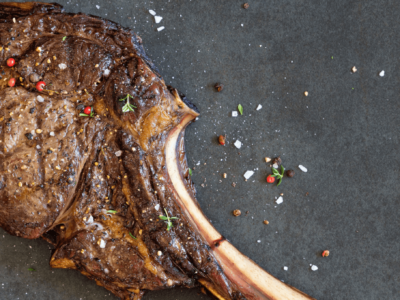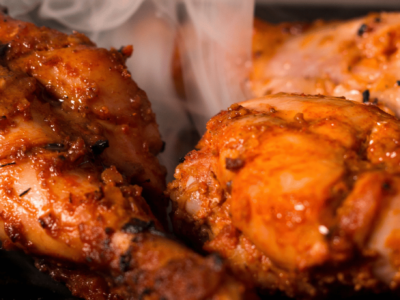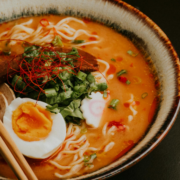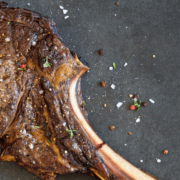Welcome to Japan’s port city – Yokohama! The Yokohama food culture is all about a sense of occasion – it’s almost like creating an opportunity to be happy with family and friends. There is a sense of community – and we love that about most regions of Japan!
Famous for its carefully handcrafted seafood specialty dishes, including sushi, Yokohama is home to several culinary delights.
From witnessing local restaurants whipping up ramen in minutes to sushi chefs creating bitesize portions, enjoying a meal here is a fun thing to do.
The best part? You will actually come across entire buildings dedicated exclusively to food. In fact, there are so many must-eat restaurants as well as great restaurants, all dedicated to food.
Since we are stubbornly partial to fresh ingredients and well-balanced flavors cultivated over several centuries, we loved Yokohama’s food – it was akin to art.
Moreover, the food in Yokohama comes with the added advantage of Western and Chinese influence, thanks to its status as Japan’s first port city.
So, get ready to drool all over Yokohama’s food – it’s a medley of flavors and courtesy, and all the eateries dotting the region.
Contents
Yokohama Food Guide: 7 Best Local Specialties To Try In Yokohama

Only a handful of Japanese cities can actually rival Yokohama in terms of food. In 1859, when Yokohama opened its gates to the outside world, so did its restaurants and kitchen, adding a global twist to classic Japanese dishes.
The result? A must-eat range of dishes that is classic, modern, and delicious at the same time.
Like everywhere else in the country, Yokohama also boasts the best of yakitori, tempura, and sushi. Then, what’s so unique about the Yokohama food culture? The coming together of influences or influx from different parts of the globe.
Moreover, the city hosts the premier Chinatown of Japan. Yokohama is also a major spot for bread, beer, and beef. When you are here, don’t miss out on the slurpy ramen scene, an exciting version of Italian pasta, Australian pancakes, and English bread.
So, once you reach Yokohama, you should definitely sink your teeth into the following specialties of the city:
- Sanmamen (Soba & Nishin Soba),
- Gyu-nabe,
- Doria,
- Spaghetti Napolitan,
- Shumai Bento,
- Edomae Sushi and
- Soup Dumplings.
1. Sanmamen:

We have already told you how different regions in Japan have various ramen flavors. For instance, you will come across pork broth ramen or Tonkotsu in Kyoto. Similarly, Yokohama has its flavor of ramen, which is called Sanmamen.
First originating in Chinatown, Sanmamen happens to be Yokohama’s specialty ramen. The bowl consists of ramen cooked in light soy sauce and topped with pork and stir-fried vegetables such as wood-ear mushrooms, bean sprouts, and cabbage. The ramen noodles are straight and thin, with the stir-fried veggies adding a satisfactory crunch.
While the world knows ramen as an iconic Japanese dish, it has its roots in the Chinese ‘lamian.’ Moreover, ramen is written in the Japanese alphabet, known as katakana, and used for loaning onomatopoeia and words. Now, this hints at ramen’s foreign origins.
In this context, Sanmamen is a delicious Chinese-inspired local dish from Yokohama that you must try on your visit to this port city in Japan.
2. Gyu-nabe:
Gyu-nabe, or beef hot pot, is another local Yokohama dish with an origin story. Interestingly, this beef hot pot is the forerunner of sukiyaki cooked in Kanto style.
FYI, in the Kanto style (Tokyo area), the sukiyaki sauce or warishita is first heated in a pot. Then, all the ingredients are added to the pot, and the whole mixture simmers together. However, in the Kansai style (Osaka area), people eat the sukiyaki in stages.
Ideal for a family get-together or a big party, Gyu-nabe is typically made inside an iron pot. Moreover, it is a communal activity reserved for special days, particularly winter.
The dish involves cooking large pieces of beef and other vegetables, including mushrooms, in a pot. The ingredients are simmered in a miso-based or soy sauce until tender and juicy.
This unique Yokohama dish originated 150 years ago during the Meiji Restoration and is often associated with quick Westernization. The Japanese have had a diet free of meat for nearly 1200 years since Emperor Tenmu banned meat consumption in the country in 675 AD.
After several years, the Meiji Emperor finally ended the ban in 1872, allowing beef consumption for celebrating the New Year. At the time, this was considered a radical move since eating meat was thought to be uncivilized.
Moreover, people associated eating beef with the West since meat was commonly considered a source of strength.
As a result, embracing a Western meat-eating culture in addition to embracing other Western ideas and innovations was thought to revitalize Japan.
3. Doria:
Cheesy, creamy, and full of carbs! What’s not to like about Doria, yet another West-inspired Yokohama dish you must try. This casserole-like, baked dish with a good amount of cheese and béchamel sauce typically includes meat or seafood.
Moreover, this decadent, delightful celebration of carbs and dairy first originated in the 1930s at Yokohama’s Hotel New Grand.
At the time, Chef Saly Weil from Switzerland got the opportunity to come up with something comforting and warm for serving a guest who had fallen sick at the hotel.
The chef cooked Doria, the Japanese version of French gratin. In this version, instead of potatoes, restaurants use rice.
Interestingly, you will find numerous versions of this iconic Yokohama dish – not just meat or seafood Doria, but also a Japanese curry version. After all, according to us, Doria is one of the best Japanese comfort foods.
4. Spaghetti Napolitan:

The Spaghetti Napolitan is another popular Yokohama dish that originated at the Hotel New Grand.
So, General MacArthur used Hotel New Grand as the headquarters at the end of the Second World War. During this time, Chef Irie Shigetada was responsible for cooking meals for the different U.S. generals.
To appease their American taste buds, the Chef made Spaghetti Napolitan with available ingredients – spaghetti, ham, mushrooms, onions, garlic, and tomato paste.
Everyone liked the dish so much that the other hotels in that area heard about this new dish. Soon, everyone was adding their touch and coming up with their versions of Spaghetti Napolitan.
Currently, many restaurants use a ketchup-like sauce to make Spaghetti Napolitan—*Italians across the globe are cringing collectively.* But if you want to try the original dish, you can head to Hotel New Grand.
5. Shumai Bento:
If you are passing through the port city of Yokohama and looking for a simple, quick lunch, you can try Shumai Bento.
Interestingly, several Japanese stations have their own kind of bento boxes, called ekiben. These are usually made with regional specialties and local ingredients. Yokohama has its type of bento box – Shumai Bento!
The best part? The Shumai Bento is iconic since it features delicious Chinese-style dumplings. It is truly a testament to the city’s melting hub of cultures.
Perhaps the most popular bento maker in Yokohama is Kiyoken—they have been selling their scallop-and-pork shumai bento boxes since 1928.
Apart from steamed dumplings, Kiyoken’s bento boxes feature karage or fried chicken, tamagoyaki or rolled omelet, bamboo shoots, kamaboko or fish cakes, a generous portion of rice, and karashi or spicy Japanese mustard for the right touch of spice.
Moreover, you don’t have to literally go to a train station to try out some shumai bento. You can also find these bento boxes at convenience stores and supermarkets in Yokohama.
6. Edomae Sushi:
In the Kanto region, which is comprised of greater Tokyo, people have eaten edomae sushi for the past few centuries. FYI, edomae refers to the seafood found in Tokyo Bay—local anglers typically catch tiger prawns, eels, tuna, and more.
However, because refrigerators were scarce in the 1800s, people who make sushi have become familiar with preserving raw fish in soy sauce, vinegar, and other curing products.
Moreover, sushi chefs in Yokohama and across the globe use this method for curing seafood. So, you can easily visit any top-notch sushi restaurant to experience the traditional technique to figure out why some sushi chefs cure seafood to bring out certain flavours.
7. Soup Dumplings:

Soup Dumplings or xiaolongbao are perhaps the most popular Chinese-inspired Yokohama snack. This particular delicacy is made when ground pork is wrapped in sheets of thin flour dough and then steamed in a seiro (basket steamer).
Typically, the dough has 14 folds. Skilled cooks pleat these folds one at a time to produce delicate and beautiful results.
For maximum freshness, it is best to go to restaurants that steam the dumplings after the guests place their orders.
We love these dumplings. If you pick up a dumpling with a spoon and then break its skin with chopsticks, you will see hot soup literally oozing out from inside the dumpling.
Naturally, it is best to eat fresh dumplings while they are hot—just ensure that you don’t end up burning your tongue in the process.
Moreover, while these dumplings are delicious, they go very well with ginger and black vinegar. You can also try out grilled dumplings and other unique dishes made of shark fin and shrimp in Yokohama Chinatown.
Frequently Asked Questions:
Check out the most frequently asked questions about the Yokohoma food culture.
1. What Food Is Yokohama Famous For?
Yokohama is famous for the following food options:
- Beef Hot Pot or Gyu-nabe,
- Yokohama Beer,
- Spaghetti Napolitan,
- Doria,
- Shumai Bento and
- Ice Cream.
2. What Are The Popular Foods In Japan?
The most popular food items in Japan are as follows:
- Sushi,
- Tempura,
- Udon,
- Tofu,
- Yakitori,
- Donburi,
- Ramen, and
- Sashimi.
3. How Many Restaurants Are In Yokohama, Japan?
There are many restaurants in Yokohama. In fact, there are nearly 500 restaurants in the Noge area near the Sakuragicho Station.
4. What Kind Of Food To Expect In Japan?
Here’s what you must try out in Japan:
- Unagi,
- Ramen,
- Sushi,
- Tempura,
- Kaiseki,
- Soba,
- Okonomiyaki, and
- Shabu-Shabu.
Bon Appétit: Add Yokohama Food To Your Wishlist ASAP!

And that’s a wrap on the best of Yokohama food culture.
With multiple options such as street food from Yokohama, Western-style eats, hearty gyu-nabe, sanmamen, Yokohama has a lot to offer. So, if you have been wondering what you should eat in Yokohama, here’s the list you need!
Yokohama is a stunning city, often overlooked. Just think about the number of fusion dishes that originated here. You will actually be able to taste the history and culture of this historic and innovative port city. Moreover, there is no end to the number of delish food options available here!
Home to the biggest Chinatown district in Japan, Yokohama is a multicultural city that you can visit if you want to try out some of the delectable Chinese specialties.
For instance, we loved chuka gayu, a type of Chinese rice porridge that we consumed as a light meal one morning.
Moreover, there is so much more to try out – from irresistible mooncakes or geppei and soup dumplings or shoronpo to barbecued pork or chasu and authentic Taiwanese tea!
Additionally, the Kanagawa Prefecture’s local cuisine is heavy on the use of vegetables, particularly in terms of dishes like vegetable chowder and tofu or kenchin-jiru and gyu-nabe.
The point is whatever you choose to do, do not miss out on the delectable and affordable eats like ramen with bean sprouts or sanmamen and pork ramen made with soy sauce or iekei ramen.
So, just grab a bento box from any of the convenience stores or the stations at Yokohama and start your food journey.
Also read

